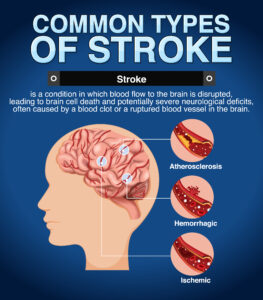Understanding Brain Tumors: Types, Symptoms, and Treatment
In recent years, there has been growing awareness about brain tumor problems and their impact on health. These abnormal growths within the brain can have profound effects on a person’s well-being. In this comprehensive guide, we will delve into the various aspects of brain tumors, including their types, symptoms, and available treatments.
What Are Brain Tumors?
Brain tumors are collections of abnormal cells that grow within the brain or its surrounding tissues. They can be classified into two main categories: malignant tumors and benign tumors. Malignant tumors are cancerous and tend to grow rapidly, often invading nearby tissues and spreading to other parts of the body. On the other hand, benign tumors are non-cancerous and usually grow more slowly, posing less risk of spreading.
Types of Brain Tumors
There are several types of brain tumors, each with its unique characteristics and origins. Some common types include:
- Gliomas: These tumors originate in the glial cells, which support and protect nerve cells. Gliomas are further categorized into astrocytomas, oligodendrogliomas, and ependymomas.
- Meningiomas: Arising from the meninges, the protective layers covering the brain and spinal cord, meningiomas are usually benign and slow-growing.
- Medulloblastomas: Often found in children, these tumors develop in the lower back of the brain and can spread to other parts of the central nervous system.
- Pituitary Adenomas: Originating in the pituitary gland, these tumors can disrupt hormonal balance and lead to various health issues.
Recognizing Symptoms
The symptoms of a brain tumor can vary widely depending on its type, size, and location. Common symptoms include persistent headaches, seizures, nausea, vomiting, changes in vision, balance problems, and cognitive changes. It’s important to note that these symptoms can also be indicative of other medical conditions, so a proper diagnosis by a healthcare professional is crucial.
Diagnosis and Treatment
Diagnosing a brain tumor involves a combination of medical history, physical examination, and imaging tests such as MRI or CT scans. The treatment plan is tailored to the specific case once it is diagnosed. Treatment options may include:
- Surgery: If feasible, surgical removal of the tumor is often the first step in treatment.
- Radiation Therapy: This involves targeting the tumor with high-energy radiation to shrink or eliminate it.
- Chemotherapy: Medications are used to destroy cancer cells or prevent their growth.
- Targeted Therapies: These therapies aim to specifically target the genetic mutations that drive tumor growth.
Coping and Support
Dealing with a brain tumor diagnosis can be emotionally and physically challenging. Patients, along with their families, can benefit from seeking support through counseling, support groups, and education about the condition.
Meta Description:
Learn about brain tumors: their types, symptoms, and treatment options. Understand the impact of gliomas, meningiomas, and more. Discover how to recognize symptoms and explore available therapies.
Suggested Title Tags:
- Understanding Brain Tumors: Types, Symptoms, and Treatment
- Exploring Brain Tumor Types and Their Effects
- Coping with a Brain Tumor Diagnosis: Treatment and Support
Related keywords or search queries you might be interested in:
- How to detect brain tumors at home
- How long before brain tumor symptoms show?
- Is a brain tumor curable?
- Causes of Brain Tumors in Teenagers
- Symptoms of a brain tumor in the back of the head
Remember that this content is intending to provide general information. It should not replace professional medical advice. If you suspect a brain tumor or have related concerns, consult a healthcare professional for accurate diagnosis and guidance.





